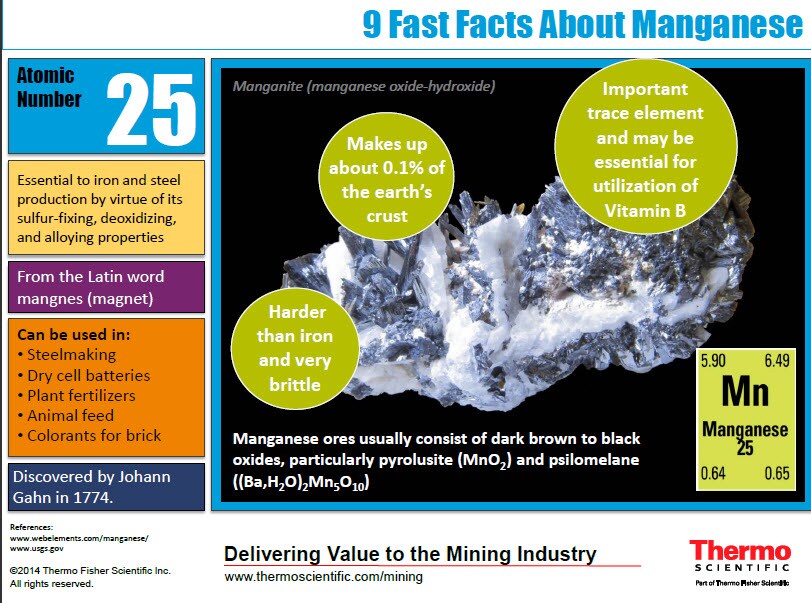It’s harder and more brittle than iron. Your body needs it to function properly, but too much can be unsafe. It’s found in several foods – including nuts, tea, whole grains, and leafy vegetables – as well as in construction equipment, dry cell batteries and plant fertilizers. It’s Manganese, a gray-white metal, with atomic number 25 on the periodic table. Manganese (Mn) is not a rare metal as it makes up about 0.1% of the earth’s crust. Manganese ores usually consist of dark brown to black oxides particularly pyrolusite (MnO2) and psilomelane [(Ba,H2O)2Mn5O10]. Manganese carbonate (rhodochrosite, MnCO3) and silicate (braunite, MnSiO3) may occur locally. All manganese minerals usually show a close spatial relation to the iron ores. Manganese is mined in countries such as South Africa, Australia, China, Brazil, Gabon, Ukraine, India, Ghana and Kazakhstan. According to the United States Geological Society, “Land-based manganese resources are large but irregularly distributed; those in the United States are very low grade and have potentially high extraction costs. South Africa accounts for about 75% of the world’s identified manganese resources, and Ukraine accounts for 10%.” The USGS reports that the value of domestic consumption, estimated from foreign trade data, was about $950 million. Wants some quick facts about Magnesium? Take a look at this infographic that lists 9 Fast Facts about Manganese.
Fascinating Facts About Manganese



Chính Sách Vận Chuyển Và Đổi Trả Hàng
Miễn phí vận chuyển mọi đơn hàng từ 500K
- Phí ship mặc trong nước 50K
- Thời gian nhận hàng 2-3 ngày trong tuần
- Giao hàng hỏa tốc trong 24h
- Hoàn trả hàng trong 30 ngày nếu không hài lòng
Mô tả sản phẩm